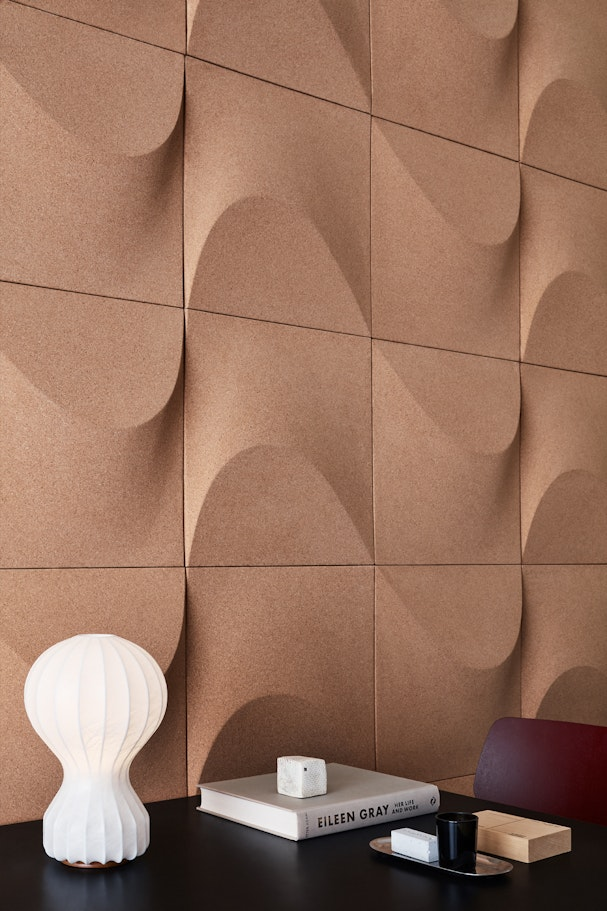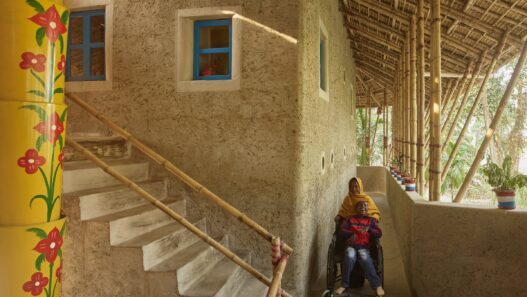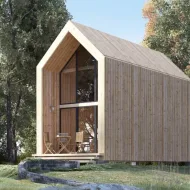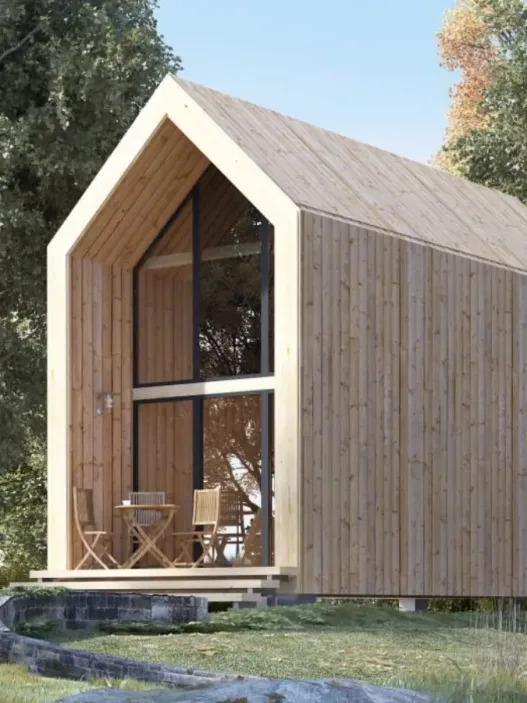Cork panels are an innovative architectural material that has received considerable attention in recent years. Derived from the bark of cork oak trees, these panels offer a unique blend of aesthetic appeal, functionality and sustainability. As we explore the multifaceted world of cork panels, we will examine their historical significance, natural properties, environmental benefits and growing popularity in contemporary design. We will also touch on how cork panels harmonize with acoustic design principles, making them not only beautiful but also functional in a variety of spaces.

History of Cork in Architecture
The use of cork in architecture dates back centuries. Ancient civilizations such as the Egyptians and Romans recognized the versatile qualities of cork and used it for applications ranging from buoyancy in fishing to insulation in their buildings. However, it was in the 19th century that cork really began to shine in architectural contexts. As industrialization progressed, architects and designers discovered cork’s exceptional insulating properties and light weight, allowing it to be integrated into flooring and wall coverings.
In the mid-20th century, the modernist movement further embraced cork, celebrating its organic texture and warmth. It became a staple in avant-garde design, where architects sought to create harmonious interior environments connected to nature. Today, cork is experiencing a renaissance, blending its historical significance with modern functionality and being used in innovative ways in both residential and commercial spaces.
Characteristics of Cork as a Material
Cork is renowned for its unique properties that make it an excellent choice for a variety of architectural applications. One of its most remarkable properties is its natural insulating ability. The cellular structure of cork traps air, providing effective thermal insulation and helping to regulate indoor temperatures. This quality not only increases energy efficiency but also contributes to a comfortable living environment.
Another important feature is its ability to absorb sound. Cork panels can effectively dampen noise, making them ideal for areas where acoustic control is crucial, such as offices, homes and public buildings. Furthermore, cork is naturally resistant to mold and mildew, which increases its longevity and suitability for humid environments.
Furthermore, the lightweight nature of cork makes it easy to handle and install, allowing architects to explore creative designs without compromising structural integrity. Available in a variety of colors and textures, its aesthetic versatility allows for endless design possibilities, making it a favorite among architects and interior designers alike.
Sustainability of Cork
Cork is one of the most sustainable materials used in architecture today. Harvested from the bark of the cork oak tree without harming the tree itself, this process allows the tree to continue to grow and produce cork for decades. This regenerative harvest occurs every nine years and ensures a continuous supply while promoting biodiversity in cork oak forests, which are important habitats for a variety of species.
Furthermore, cork trees play an important role in carbon sequestration by absorbing large amounts of CO from the atmosphere. By opting for cork panels, architects and designers contribute to a circular economy that prioritizes environmental stewardship. The production of cork panels also requires minimal energy compared to synthetic alternatives, further enhancing its eco-friendly profile.
As the world increasingly shifts towards sustainable building practices, cork stands out as a responsible choice that combines environmental awareness with aesthetic appeal.
Popularity in Modern Design
In recent years, there has been a notable resurgence in the popularity of cork panels in modern design. This trend is in line with a broader movement towards biophilic design, which aims to connect people with nature through the use of natural materials. Cork’s warm tones and organic textures are in line with this ethos, making it a preferred choice for both residential and commercial spaces.
Architects and designers appreciate cork for its versatility. It can be used in a variety of applications, from wall coverings and ceilings to furniture and flooring. Its adaptability lends itself seamlessly to a variety of design styles, from minimalist to eclectic, allowing for both dramatic statements and subtle accents.
Moreover, as more designers prioritize health and well-being in their projects, cork’s non-toxic and hypoallergenic properties increase its appeal. With the growing awareness of indoor air quality, cork panels offer a safe and healthy alternative to traditional materials. This combination of aesthetics, functionality and healthy living makes cork panels a fundamental element in contemporary design.
Overview of Acoustic Design Principles
Acoustic design is an important aspect of architecture that focuses on how sound behaves within a space. Acoustic design principles aim to enhance the auditory experience by ensuring that sound is clear, balanced and free from unwanted noise. Cork panels play a very important role in this field due to their sound absorbing qualities.
When sound waves hit the cork surface, they are partially absorbed, reducing echoes and reverberation. This is particularly useful in spaces such as concert halls, offices and schools where sound clarity is vital. By using cork panels, designers can create environments that encourage effective communication and a pleasant auditory experience.
In addition, cork’s ability to reduce sound can contribute to privacy in open office environments or residences, creating a more serene atmosphere. As architects increasingly recognize the importance of acoustic considerations in their designs, cork panels are emerging as a versatile solution that combines beauty and functionality.
As a result, cork panels represent a remarkable intersection of history, sustainability and modern design. Their unique properties and applications make them an attractive choice for architects and designers who want to create environments that are not only aesthetically pleasing, but also conducive to well-being and sustainability.
Benefits of Using Cork Panels
Cork panels have gained popularity in interior design and construction, known for their unique properties and environmental benefits. Derived from the bark of cork oak trees, these panels are not only sustainable, but also offer a number of advantages that make them an attractive choice for a variety of applications. Let’s examine in more detail the main benefits of using cork panels.
Sound Absorption Properties
One of the most important advantages of cork panels is their exceptional sound absorption capabilities. The cellular structure of cork consists of tiny air-filled pockets that effectively dampen sound waves. This makes cork an ideal material for areas where acoustics are a priority, such as music studios, home theaters or busy offices. By installing cork panels, you can significantly reduce noise levels and create a more serene and focused environment. For example, many modern restaurants and cafes have started using cork to enhance their ambience, allowing conversation without background noise.
Benefits of Thermal Insulation
Cork panels are also excellent for thermal insulation. The natural properties of cork help regulate temperature, keeping spaces warm in winter and cool in summer. This can lead to significant energy savings, as buildings require less heating and cooling. In a world increasingly focused on energy efficiency, cork offers an environmentally friendly solution. For example, many environmentally conscious homeowners are opting for cork in their renovations, appreciating its ability to provide a comfortable indoor climate while reducing dependence on heating systems.
Aesthetic Versatility
Beyond their functional benefits, cork panels offer remarkable aesthetic versatility. Available in a variety of colors, textures and patterns, cork can complement a wide range of design styles, from rustic to modern. Its warm, natural appearance brings an organic touch to interiors, making it a popular choice for feature walls, ceilings and flooring. Designers often use cork to create unique visual statements, blending nature with contemporary architecture. A well-designed cork wall can serve as a striking focal point in a living room or office and contribute to an inviting atmosphere.
Lightweight and Easy to Install
Another notable benefit of cork panels is their lightweight construction, which simplifies installation. Unlike traditional materials, cork is easy to handle, making it a favorite among DIY enthusiasts and professional contractors alike. The simple installation process means that cork can be applied to a variety of surfaces without the need for extensive tools or expertise. This accessibility encourages more people to incorporate cork into their projects, whether it’s a simple wall covering in a bedroom or an ambitious renovation of a commercial space.
Cost Effectiveness
Finally, cork panels are a cost-effective option for both new builds and renovations. While they may initially seem more expensive than some standard materials, their durability and longevity often lead to lower long-term costs. Cork is resistant to wear and tear, moisture and even pests, which means less frequent replacement and repairs. Many businesses and homeowners find that investing in cork panels ultimately pays off by increasing property value and reducing maintenance costs. This economic advantage, combined with its numerous benefits, makes cork panels an attractive option in today’s market.
In summary, the benefits of using cork panels go beyond just aesthetics. Their sound absorption properties, thermal insulation capabilities, versatility in design, lightweight installation and cost-effectiveness make them the perfect material for a wide range of applications. As sustainability becomes increasingly important, cork is emerging as a natural, eco-friendly choice that not only enhances the beauty of spaces but also contributes to a healthier environment.
Applications of Cork Panels in Architecture
Cork panels have emerged as a versatile and sustainable building material and are gaining traction in a variety of architectural contexts. Known for their unique properties such as thermal insulation, sound absorption and aesthetic appeal, cork panels provide both functionality and beauty. As architects and designers increasingly focus on eco-friendly solutions, cork panels offer an attractive option that meets both environmental and practical needs. Let’s examine the various applications of cork panels in different architectural settings.
Residential Areas
In residential architecture, cork panels offer a range of benefits that enhance the comfort and aesthetics of homes. One of their highlights is their excellent thermal insulation, which helps maintain a constant indoor temperature, reducing energy costs. This is especially valuable in regions with extreme climates where heating and cooling demands can be significant.
The natural texture and warmth of cork creates inviting interiors, making it an ideal choice for living rooms, bedrooms and even kitchens. Its unique sound absorption also contributes to a quieter home environment, allowing families to enjoy peaceful living spaces. Furthermore, cork is hypoallergenic and resistant to mold and mildew, making it a healthy choice for families with allergies.
Designers have creatively used cork panels not only on walls, but also as flooring and ceiling materials. Cork flooring, for example, adds a soft, cushioned feel underfoot while providing durability. In contemporary homes, cork can be integrated into modular furniture designs, adding an innovative touch to the modern aesthetic.
Commercial Buildings
The use of cork panels in commercial architecture can significantly improve the functionality and visual appeal of spaces such as offices, restaurants and retail stores. Many businesses are now focusing on creating environments that support employee well-being and customer comfort. The sound-absorbing properties of cork make it an excellent choice for open-plan offices, where noise can often be distracting. By incorporating cork panels into the design, companies can create quieter working environments that increase productivity.
Furthermore, since cork is a renewable resource, it is an attractive option for businesses looking to emphasize sustainability. By using cork for wall coverings and furniture, restaurants and retail spaces can create a warm and inviting atmosphere that resonates with customers. Cork’s natural aesthetic also complements a variety of design styles, from rustic to modern, providing versatility in commercial applications.
In some innovative cases, businesses have used cork in branding, such as incorporating it into signage or interior design elements, which not only promotes sustainability but also creates a unique identity for the brand.
Educational Institutions
In educational environments, cork panels offer numerous advantages that enhance the learning environment. Classrooms and common areas can benefit greatly from the sound absorption properties of cork, providing students with a more focused atmosphere. By reducing noise levels, cork helps create spaces conducive to concentration and learning.
Cork’s insulating properties also contribute to energy efficiency in schools, keeping classrooms comfortable year-round. Schools can also use cork panels in creative ways, such as interactive bulletin boards or wall art, promoting a sense of community and engagement among students and staff.
Beyond functional benefits, the use of cork in educational institutions is in line with the growing emphasis on sustainability education. By choosing eco-friendly materials such as cork, schools can educate students about environmental responsibility and the importance of using renewable resources.
Cultural and Community Centers
Cork panels are particularly well suited for cultural and community centers, where the aim is often to create warm and inclusive environments. These spaces often host a variety of events, from workshops to performances, and require flexibility in design. Cork’s ability to absorb sound makes it an ideal choice for auditoriums and multipurpose rooms, improving acoustics and providing a better experience for audiences.
Aside from the acoustic benefits, cork panels can also be used to create visually stunning interiors. The natural patterns and colors of cork can add warmth and character to public spaces, fostering a sense of belonging among visitors. For example, art studios and galleries can use cork as a wall covering to create a unique backdrop for exhibitions, emphasizing the artistic purpose of the space.
In addition, many community centers focus on sustainability initiatives, and incorporating cork into their design reinforces this commitment. By showcasing renewable materials, these centers can inspire community members to consider environmentally friendly practices in their own lives.
Open Spaces and Acoustics
The versatility of cork extends beyond indoor applications; it can also be used effectively outdoors. Parks, gardens and recreation areas benefit from the natural properties of cork, which can help reduce noise in urban environments. By using cork barriers or panels, designers can create tranquil outdoor spaces that provide a respite from the hustle and bustle of city life.
In urban environments, cork can be integrated into playgrounds, providing a soft, safe surface for children to play on while also absorbing sound. This dual function enhances the overall experience of outdoor spaces, making them more enjoyable for families and communities.
Furthermore, cork’s resistance to moisture and rot makes it suitable for exterior applications such as cladding in outdoor structures. Its durability ensures that it can withstand the elements while maintaining its aesthetic appeal, making it a smart choice for architects looking to create lasting outdoor environments.
As a result, the applications of cork panels in architecture are diverse and effective. From housing to educational institutions and community centers, cork serves as a sustainable, functional and aesthetically pleasing material. As architects continue to seek innovative solutions that prioritize both design and environmental responsibility, cork panels will undoubtedly play an important role in shaping the future of architecture.
Design Innovations with Cork Panels
Cork panels have emerged as a remarkable material in the world of design and architecture. Known for its sustainability, versatility and unique aesthetic qualities, cork is increasingly being used in innovative ways. From residential spaces to commercial environments, cork panels offer a blend of functionality and style. This section examines various aspects of cork panel design innovations, highlighting textured designs, customization, integration with smart technology, hybrid materials and future trends.
Textured Cork Designs
Textured cork designs are mesmerizing and provide a sensory experience that few materials can match. Cork’s natural grain and porous structure create rich, tactile surfaces that enhance both the visual and physical aspects of a space. Designers are producing cork panels with a variety of textures, from smooth surfaces to intricate patterns that mimic natural landscapes. These designs not only add depth and interest to walls, but also contribute to sound insulation and thermal regulation.
Cork panels, for example, can be used in home offices or studios where acoustic performance is crucial. Textured surfaces absorb sound, creating a quieter environment conducive to concentration. In public spaces, textured cork can enhance the experience of visitors, making them feel more connected to the environment. The interplay of light and shadow on these surfaces can dramatically change the ambience, creating inviting and comfortable environments.
Customizable Panel Options
One of the most exciting aspects of cork panels is their customizability. By manipulating cork in a variety of ways, designers can create custom solutions that meet specific aesthetic and functional needs. The fact that cork can be painted, printed or cut into unique shapes allows homeowners and architects to create bespoke designs that reflect personal style or brand identity.
In commercial spaces, customized cork panels can serve as branding opportunities. A café, for example, can choose panels featuring its logo or thematic patterns that align with the overall design concept. Furthermore, the lightweight nature of cork makes it easy to install and rearrange, allowing spaces to be easily redefined over time. This adaptability means that cork panels are not just a one-off design solution, but a dynamic element that can evolve with changing trends and preferences.
Integration with Smart Technology
As technology continues to advance, the integration of smart features into traditional materials such as cork is gaining traction. Designers are exploring ways to incorporate sensors, lighting and even interactive elements into cork panels. Imagine a living room wall covered in cork that can change color or brightness according to the time of day or mood settings, thus creating a responsive environment tailored to the needs of the residents.
Furthermore, cork’s natural insulating properties make it an ideal partner for smart technologies that require energy efficiency. For example, smart heating systems can be paired with cork panels to optimize temperature control, providing comfort while reducing energy consumption. This intersection of design and technology not only enhances functionality, but also positions cork as a forward-thinking material in modern architecture.
Hybrid Materials and Cork
The creative use of hybrid materials is becoming increasingly popular in architectural design, and cork is making a significant impact in this area. By combining cork with other materials, designers can capitalize on the strengths of each and create innovative solutions. For example, cork can be paired with metal or glass to create striking visual contrasts and capitalize on the durability and richness of each material.
A practical application of hybrid cork designs can be seen in furniture where cork is used in combination with wood or metal frames. This combination results in lightweight yet sturdy pieces that are stylish and functional. Hybrid materials can also enhance the sustainability aspect of design, as manufacturers can source materials that are environmentally friendly and reduce waste. The synergy of cork with other materials opens up a world of possibilities resulting in unique products that push the boundaries of traditional design.
Future Trends in Cork Design
Looking ahead, the future of cork design looks bright and full of possibilities. As sustainability becomes a priority for consumers and designers alike, the eco-friendly qualities of cork are likely to grow in popularity. Through ongoing research and innovation, manufacturers are expected to develop new processing techniques that enhance the functionality and aesthetic appeal of cork.
Emerging trends may include the use of cork in modular systems where panels can be easily reconfigured for different uses or spaces. This flexibility is in line with contemporary lifestyles that prioritize adaptability and multifunctionality. Furthermore, the integration of advanced technologies such as augmented reality can change the way cork panels are designed and experienced, allowing users to visualize changes in real time.
In summary, innovations in cork panel design are paving the way for a more sustainable, customizable and tech-savvy future in architecture. As designers continue to explore the potential of this extraordinary material, we can expect to see cork become a staple in modern design, contributing to environments that are as functional as they are beautiful.
Case Studies on the Use of Cork Panels
Known for their unique aesthetic and environmental benefits, cork panels are gaining traction in modern architecture. This chapter examines several case studies that demonstrate the versatility and effectiveness of cork panels in various architectural projects. By exploring notable projects, architects’ insights, performance measurements, user feedback and key lessons learned, we will uncover the versatile applications of this extraordinary material.
Significant Architectural Projects
Cork has left its mark on the world of architecture with many remarkable projects. The Cork House in the UK, a pioneering structure using cork as a primary building material, is a prime example. Designed with sustainability in mind, this house demonstrates how cork can contribute to energy efficiency while providing excellent insulation. The design not only highlights the aesthetic appeal of cork, but also its role in minimizing the carbon footprint of the building.
Another important project is the Cork Pavilion at the Venice Biennale. This installation is made entirely of cork, showcasing the versatility and unique texture of the material. The pavilion served as a space for dialog on sustainability in architecture, highlighting the potential of natural materials in contemporary design. Visitors were impressed by the warm and tactile quality of cork, emphasizing how materials can influence the human experience in built environments.
These projects exemplify how cork panels can be creatively integrated into architectural designs and enhance both functionality and aesthetic value.
Interviews with Architects
To gain deeper insights into the use of cork panels, interviews with architects involved in these projects provide valuable perspectives. Architects frequently express their interest in cork due to its lightweight nature, which facilitates transportation and installation processes. They emphasize cork’s ability to reduce noise pollution, making it an ideal choice for urban environments where sound insulation is crucial.
One architect emphasized the adaptability of the material, noting that cork can be sculpted in a variety of ways, allowing for innovative design solutions. Another highlighted the renewable nature of cork, emphasizing that its use is in line with the principles of sustainable architecture. These talks underline the growing recognition of cork not only as a functional material, but also as a transformative material that can inspire creativity in design.
Performance Measures and Results
An examination of the performance metrics associated with cork panels reveals their effectiveness in a variety of applications. Thermal performance has been a key focus in the Cork House. The building has demonstrated remarkable energy efficiency by maintaining a constant indoor temperature with minimal dependence on external heating or cooling systems. This has been attributed to the natural insulating properties of cork, which effectively reduce energy consumption and greenhouse gas emissions.
In commercial environments such as offices where cork panels are used, studies have shown significant reductions in acoustic levels, improving productivity and comfort for employees. Air quality measurements also show that cork can help regulate humidity, creating healthier indoor environments. These results show how cork panels not only fulfill aesthetic desires but also contribute to well-being and sustainability.
User Experiences and Feedback
User experiences with cork panels often emphasize their sensory qualities. People appreciate the warmth and tactile nature of cork that can create inviting spaces. In residential projects, homeowners report feeling more connected to nature due to the organic look and feel of cork. This connection often translates into a greater appreciation of their living environment, promoting a sense of calm and well-being.
Those working in commercial spaces have reported improvements in their working environment, with reduced noise levels and a more pleasant atmosphere. Feedback from visitors to the Cork Pavilion has generated curiosity and engagement, highlighting the unique experience of interacting with a space constructed from a natural material. These anecdotal experiences underscore the profound impact that cork can have on user satisfaction and emotional connection with places.
Lessons Learned from Practices
The journey of applying cork panels in architectural projects reveals many valuable lessons. One of the main takeaways is the importance of considering the local climate and context when using cork. While its insulating properties are beneficial, architects should ensure that the design takes into account moisture management, especially in areas with high humidity.
Another lesson is the need for collaboration between architects and material specialists. Understanding the full properties of cork allows for more innovative applications and can lead to unexpected design solutions. Finally, incorporating user feedback into the design process improves the final outcome, ensuring that spaces resonate with their occupants.
As cork panels continue to gain popularity, these lessons will guide future projects, encourage sustainable practices and enrich architectural design. Through these case studies, it becomes clear that cork panels are not just a trend, but a meaningful material that enhances both function and form in the built environment.
The Future of Cork in Acoustic Design
Cork has long been renowned for its unique properties, especially in the field of acoustic design. Derived from the bark of cork oak trees, this natural material offers exceptional sound absorbing qualities, making it an ideal choice for a variety of architectural applications. As we conclude this review of cork in acoustic design, it is crucial to reflect on its contributions, the sustainability movement that is shaping its future and the innovations ahead.
Summary of Key Points
Throughout our discussion, we discovered that cork is not only a versatile material, but also a champion of acoustic performance. Its cellular structure helps absorb sound waves, reducing noise pollution in both residential and commercial spaces. Furthermore, cork’s lightweight nature makes it easy to work with, allowing architects to incorporate it into designs ranging from flooring to wall panels. The benefits go beyond acoustics, as cork is also fire-resistant, mold-resistant and naturally hypoallergenic. These qualities make it a practical choice for creating healthier living environments.
The Role of Sustainability in Future Designs
As global awareness of sustainability continues to grow, so does the demand for environmentally friendly building materials such as cork. Cork is harvested without harming the tree, allowing it to regenerate itself and sequester carbon. This sustainable harvesting method promotes biodiversity and supports local economies, especially in areas where cork oak forests thrive. Architects and designers are increasingly prioritizing materials that contribute positively to the environment, and cork stands out as a prime example of how natural resources can be used responsibly. The integration of cork into future designs not only improves acoustic performance, but is also in line with the growing understanding of sustainability in architecture.
Innovations on the Horizon
The future of cork in acoustic design is bright, with numerous innovations on the horizon. Researchers and manufacturers are exploring new processing techniques that enhance the properties of cork and make it even more effective as an acoustic barrier. For example, advances in composite materials that blend cork with other sustainable materials are paving the way for products that offer greater durability and aesthetic appeal. Furthermore, advances in digital design and manufacturing techniques, such as 3D printing, could enable more complex and customized uses of cork in architectural projects. These innovations promise to increase cork’s versatility and solidify its role in modern design.
Encouraging Wider Adoption
To fully realize the potential of cork in acoustic design, it is crucial to encourage its wider adoption in the architecture and construction sectors. Education plays a crucial role in this process. By raising awareness of the benefits of cork, architects, builders and clients can appreciate its advantages over synthetic materials. Collaboration between educational institutions and industry professionals can encourage research and development initiatives that emphasize the acoustic properties and sustainability of cork. Furthermore, showcasing successful projects that use cork effectively can create a ripple effect in the market, inspiring others to follow suit.
Final Thoughts on the Legacy of Cork in Architecture
Cork represents a rich heritage in architecture, combining practicality with environmental awareness. Its journey from humble bark to a sought-after design element illustrates the evolving relationship between nature and human creativity. As we move forward, cork’s role in acoustic design is likely to expand through innovation and a steadfast commitment to sustainability. Cork’s legacy is not just about sound absorption; it is about creating spaces that respect the planet while providing comfort and beauty. By embracing cork, architects are not only improving their designs, but also advocating for a future where materials are chosen for their harmony with the environment and their ability to enrich human experiences.
Discover more from Dök Architecture
Subscribe to get the latest posts sent to your email.




















